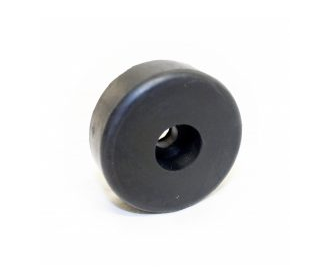• Reduced road Noise
• Dampened vibrations
• Dampened harshness
• No squeaking opportunity
• Lower cost
• Better heat resistance
• Standard lifespan
• Typical feel of the road
• Standard performance
Rubber’s reputation as a spring material has its origin in its ability to maintain longevity, resilience, bonding to metals, resistance to high temperature, all the while keeping costs low. One significant advantage, rubber has over polyurethane is rubber’s ability to resist heat. If the application includes significant heat resistance, then rubber is the elastomer that should be used. It also resists swelling when under water. Industrial rubber engine mounts are going to offer the greatest vibration and noise dampening effect. However, there are some disadvantages to the rubber style mounts. This type of mount may crack and tear prematurely depending on the amount of ozone added to the rubber compound. This can lead to excessive movement of the engine under larger loads, which in turn means less power is transferred from the engine through the driveline to the rear wheels.

• Polyurethane will last longer than rubber
• There is an enhanced feel of road
• Enhanced performance
• Increased road noise
• Increased vibrations
• Higher cost
• There is a slight squeaking opportunity
• Less heat resistance
Polyurethane engine mounts provide a compromise between some of the benefits rubber and some of the benefits of solid mounts made of steel. Polyurethane can be compounded for higher durometers than rubber, which will hold the engine in place better than rubber compounded at softer durometers. With a harder material, more energy will be transferred through the driveline. While urethane will increase the vibration felt by the driver because of its increased stiffness. Some of the vibration can depend on the size of the engine, whether the mount is for an industrial truck, car, boat, ATV or other types of vehicle. As with many things, some of the tolerance for vibration by the driver may come down to personal preference. In general, though, polyurethane will be tougher and stiffer than rubber, making it ideal for more highly modified vehicles.
Copyright © 2025 GYCX Factory | All Rights Reserved.